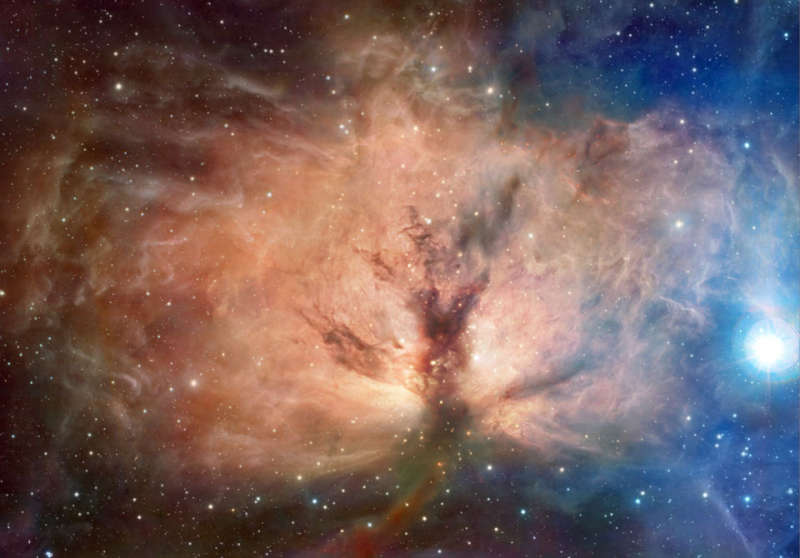
|
Credit & Copyright: Optical (RGB+Ha):
Aldo Mottino & Ezequiel
Bellocchio (Argentina); Infrared: ESO/J. Emerson/VISTA.
Explanation:
What lights up the Flame Nebula?
Fifteen hundred
light years away towards the constellation of Orion lies a nebula which, from its glow and dark
dust lanes,
appears, on the left, like a billowing fire.
But
fire,
the rapid acquisition of
oxygen,
is not what makes this
Flame glow.
Rather the bright star Alnitak, the easternmost star
in the
Belt of Orion
visible just to the right of the nebula, shines energetic light into the
Flame that knocks electrons away from the
great clouds of hydrogen
gas that reside there.
Much of the glow results when the electrons and
ionized hydrogen recombine. The above false-color picture
of the Flame Nebula (NGC 2024)
was taken is a composite of both visible and
infrared
light, the later energy band being
where a young star cluster
becomes visible.
The Flame Nebula is part of the
Orion Molecular Cloud Complex,
a star-forming region that includes the famous
Horsehead Nebula.
Astrophysicists:
Browse 900+ codes in the Astrophysics Source Code Library
|
January February March April May June July August September October November December |
| ||||||||||||||||||||||||||||||||||||||||||||||||
NASA Web Site Statements, Warnings, and Disclaimers
NASA Official: Jay Norris. Specific rights apply.
A service of: LHEA at NASA / GSFC
& Michigan Tech. U.
Based on Astronomy Picture
Of the Day
Publications with keywords: dust - infrared
Publications with words: dust - infrared
See also:
